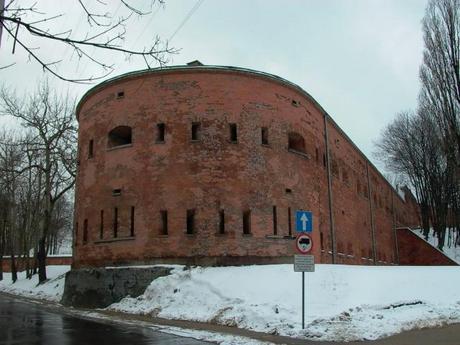Citadel Museum
Citadel Museum is located on 25 Skazancow Street near Wybrzeze Gdanskie Street. Citadel is a fortress built by Russians in XIX th. Century when Poland was partitioned by 3 countries: Russia, Germany and Poland. Warsaw was being occupied by Russia at that time.
The Citadel was built by personal order of Tsar Nicholas I after the 1830 November Uprising. Its chief architect, Major General Ivan Dehn, used the plan of a fortress in Antwerp as the basis for his own plan. The cornerstone was laid by Field Marshal Ivan Paskevich, de facto viceroy of Congress Poland.
The fortress is a pentagon-shaped brick structure with high outer walls, enclosing an area of 36 hectares. Its construction required the demolition of 76 residential buildings and the forcible resettlement of 15,000 inhabitants.
Citadel was not used to defend the city from possible attacks but was used to intimidate the inhabitants of the city. Citizens of Warsaw had to absorb the huge cost of building the fortress while Russian officials made fortunes on investing money in development.
Nowadays the 10th pavilion of the Citadel, that earlier served as a prison, houses the branch of the Independence Museum. Its exhibition elucidates the history of Poland from the 18th century division of the country between Russia, Prussia and Austria up to the 20th century. The visitors can walk around the labyrinth of tunnels and prison cells that have been quite well preserved. On display there are paintings, prison relics and firearms. On the outside there is a small arsenal of heavy-duty military equipment of the World War II, including T-34 and T-54 tanks, and a world-famous Russian rocket launcher Katyusha. There you'll also find a Nazi bunker dating from 1940, a cemetery and the Gate of Execution, which is a place, where in 1864 national heroes Traugutt and Dabrowski were executed in front of a crowd of 30,000.
This stronghold for almost two centuries remains a symbol of martyrdom and struggle for independence for the Polish nation. Nowadays it is one of the best-preserved military fortresses in Poland and a very popular walking area with picturesque park, playgrounds for children and a duck pond.
It stands by the Wisla river and dominates the surrounding area. During World War II Citadel was used to house Polish political prisoners. Many people have lost their lives in this place.



